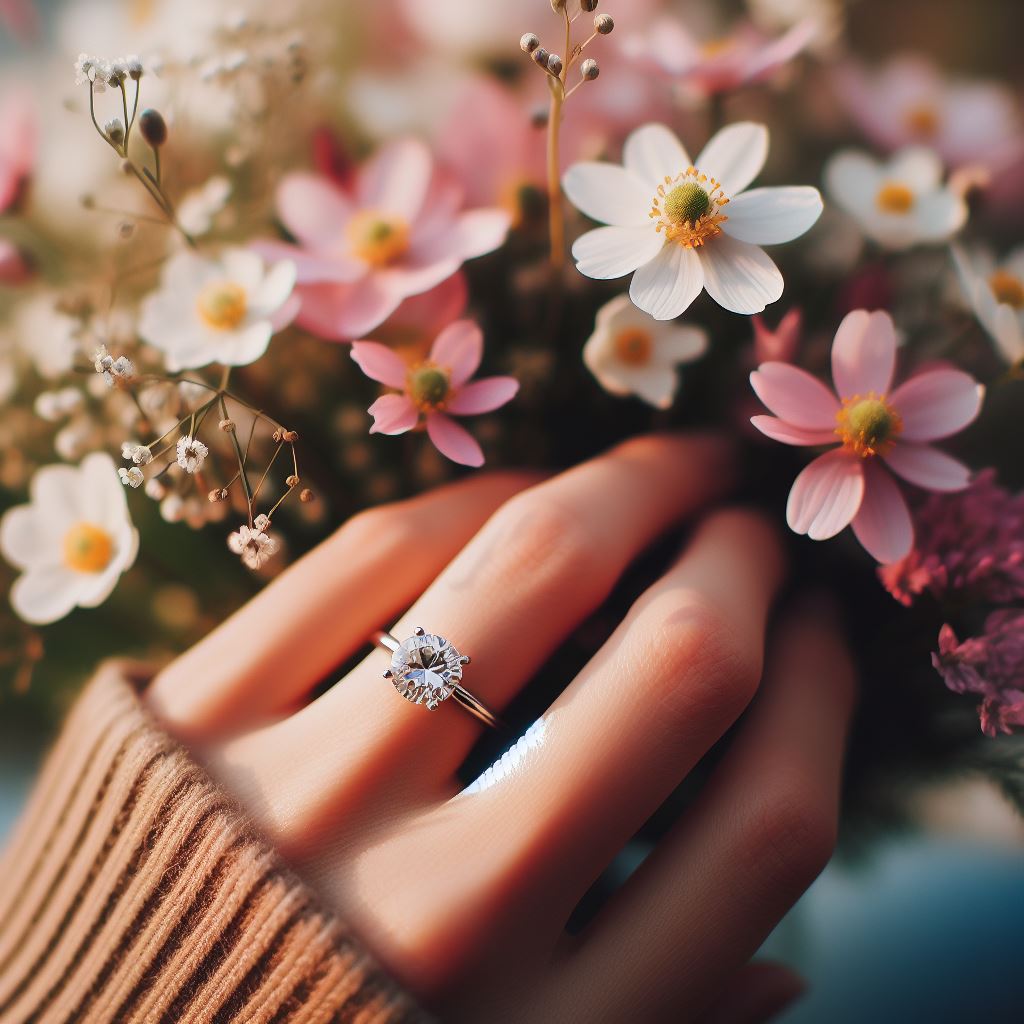Simple Guide to Buying a Lab Diamond Engagement Ring
When it comes to popping the big question, there are few things more nerve-wracking than picking the perfect engagement ring. But fear not, dear reader! Whether you’re a diamond novice or a bling connoisseur, this guide will illuminate the wonders of lab-grown diamonds. Get ready to dive into the sparkling world of lab diamond engagement rings, armed with wit, wisdom, and a healthy dose of humor.
What Exactly Is a Lab Diamond?
Let’s cut to the chase (pun totally intended): what on Earth is a lab diamond? Simply put, lab diamonds are real diamonds. They’re created in a lab, mimicking the high-pressure, high-temperature conditions that form natural diamonds. The result? A gem that’s chemically, physically, and optically identical to its natural counterpart. Yes, you heard that right – it’s a real diamond, just with a bit of science magic.
Why Choose a Lab Diamond?
- Ethical Bling: Unlike some natural diamonds that might have murky origins, lab diamonds are conflict-free. You can rest easy knowing your gem wasn’t part of any nefarious deeds.
- Eco-Friendly Sparkle: Lab diamonds have a significantly smaller environmental footprint compared to mined diamonds. No heavy machinery, no ravaged landscapes – just pure, pristine sparkle.
- Bang for Your Buck: Lab diamonds often cost 20-40% less than natural diamonds. That means you can either save some cash or go bigger and blingier without breaking the bank.
How Lab Diamonds Are Made: The Science Behind the Sparkle
To truly appreciate the marvel of lab diamonds, let’s delve into the nitty-gritty of how they’re made. There are two primary methods: High-Pressure High-Temperature (HPHT) and Chemical Vapor Deposition (CVD). Both processes create stunning diamonds, but each has its own unique steps and scientific flair.
1. High-Pressure High-Temperature (HPHT)
HPHT is the OG method of creating lab diamonds, simulating the natural diamond-forming process found deep within the Earth.
- Step 1: The Seed – A tiny diamond seed (a sliver of a natural diamond) is placed into a growth chamber.
- Step 2: Intense Pressure and Heat – The chamber is subjected to pressures of about 1.5 million pounds per square inch and temperatures exceeding 2,000 degrees Fahrenheit. These conditions replicate those found 100 miles beneath the Earth’s crust.
- Step 3: Carbon Source – Pure carbon, in the form of graphite, is introduced into the chamber. The extreme pressure and heat cause the carbon to dissolve.
- Step 4: Diamond Formation – As the temperature cools, the carbon crystallizes around the diamond seed, forming a larger diamond.
2. Chemical Vapor Deposition (CVD)
CVD is a more modern technique, leveraging the power of gas and plasma to grow diamonds layer by layer.
- Step 1: The Seed – A diamond seed, typically a thin slice of diamond, is placed in a vacuum chamber.
- Step 2: Gas Introduction – A carbon-rich gas, usually methane, is introduced into the chamber.
- Step 3: Plasma Activation – The gas is ionized into plasma using microwaves or lasers, breaking down the gas molecules.
- Step 4: Diamond Growth – Carbon atoms from the plasma bond to the diamond seed, layer by layer, growing a diamond over several weeks.
Why Lab Diamonds Are Real Diamonds?
Lab diamonds aren’t cubic zirconia or moissanite; they’re bona fide diamonds. Here’s why:
- Chemical Composition: Lab diamonds are composed of pure carbon atoms arranged in a crystal lattice structure, identical to natural diamonds.
- Physical Properties: Lab diamonds share the same hardness, density, and refractive index as natural diamonds.
- Optical Properties: They exhibit the same brilliance, fire, and scintillation as natural diamonds, dazzling the eye with their sparkle.
In short, lab diamonds are real diamonds because they possess the same physical, chemical, and optical properties as diamonds formed in the Earth’s mantle. They’re just made in a lab instead of being mined from the ground.
Common Questions About Lab Diamonds
1. Are lab diamonds real diamonds?
Absolutely! Lab diamonds are real diamonds, indistinguishable from natural ones without specialized equipment. If you want to dazzle with a genuine gem, lab diamonds deliver.
2. Do lab diamonds sparkle as much as natural diamonds?
Oh, they most certainly do! Lab diamonds have the same brilliance and fire as natural diamonds. Your engagement ring will sparkle, shimmer, and shine just as brightly.
3. How are lab diamonds made?
There are two main methods: High-Pressure High-Temperature (HPHT) and Chemical Vapor Deposition (CVD). Both processes create stunning diamonds, but we’ll spare you the chemistry lecture. Just know it’s all very high-tech and impressive.
4. Are lab diamonds durable?
Lab diamonds are just as hard and durable as natural diamonds, making them perfect for everyday wear. They score a 10 on the Mohs hardness scale, just like their earth-mined siblings.
Tips for Buying a Lab Diamond Engagement Ring
1. Do Your Homework
Before you dive into the sparkling sea of diamonds, brush up on the 4 Cs: Cut, Clarity, Color, and Carat. These factors determine a diamond’s quality and value. Understanding them will help you make an informed choice.
2. Choose a Reputable Retailer
Not all that glitters is gold – or diamond. Make sure to buy from a reputable jeweler like The Art of Jewels, who specializes in lab diamonds. Look for certifications from trusted organizations like the International Gemological Institute (IGI) or the Gemological Institute of America (GIA).
3. Inspect the Certification
A certified diamond comes with a report detailing its characteristics. Think of it as your diamond’s birth certificate. It should include information on the 4 Cs, and it’s crucial for ensuring you get what you’re paying for.
4. Consider Customization
Lab diamonds offer a fantastic opportunity for customization. Since they’re more affordable, you might have room in your budget for a custom design. From vintage settings to modern solitaires, let your imagination (and budget) run wild.
The Final Verdict
Choosing a lab diamond engagement ring is a savvy, stylish, and sustainable choice. You get all the brilliance and beauty of a natural diamond without the ethical or environmental baggage. Plus, you might even save enough to splurge on an epic honeymoon. So, go ahead – let your love shine bright with a lab diamond!
Ready to Start Shopping?
Now that you’re armed with knowledge, it’s time to start shopping. Remember, an engagement ring is a symbol of your unique love story. Make sure it reflects your personality, values, and style. Happy ring hunting!
So, there you have it – the lowdown on lab diamonds with a sprinkling of humor. Whether you’re a die-hard romantic or a practical planner, lab diamonds are a brilliant choice. After all, love is priceless, but your ring doesn’t have to be!





